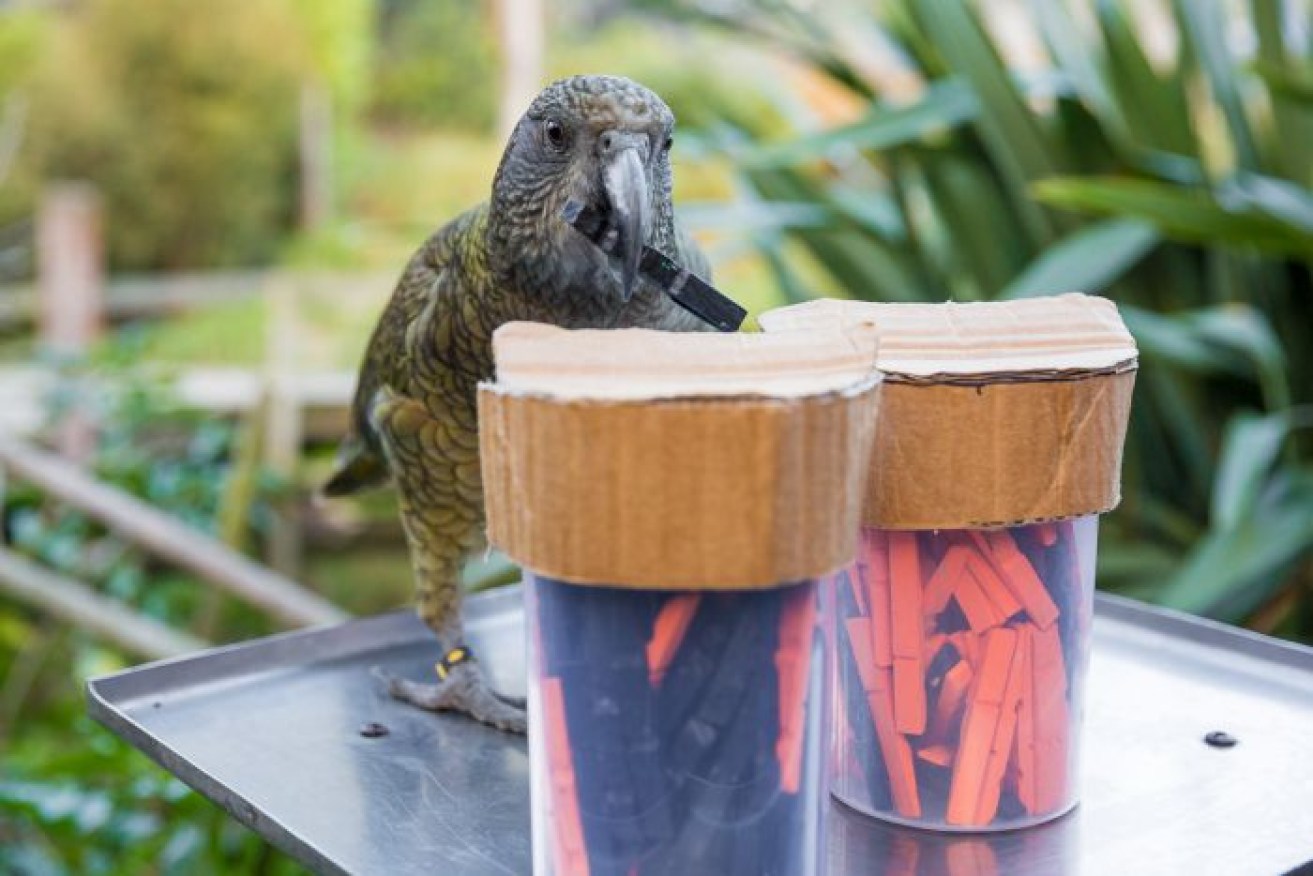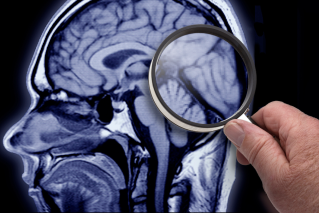The New Zealand kea can understand probability, a cognitive trait only seen in apes and humans

The New Zealand kea has shown it makes decisions based on probabilities, rather than simpler strategies. Photo: ABC
Being called “bird-brained” isn’t much of an insult when you’re being compared to the highly intelligent Kiwi parrot, the kea.
New research, published in Nature Communications, has found this New Zealand native is capable of predicting the likelihood of an event occurring – a trait only seen before in great apes such as humans.
What’s more, the birds also displayed signs of domain-general intelligence, which combines two sources of information to make a single judgment.
“That’s something humans are very, very good at,” said comparative psychologist and lead author of the study Amalia Bastos.
Ms Bastos, who is a PhD student at the University of Auckland, described these abilities in terms of how they might work in a game of poker.
You can judge what card someone might be putting down depending on the likelihood of them having that card, but also by reading their facial expressions and knowing how good they are at lying, she said.
What is fascinating is that we had some inklings that birds might show domain-general intelligence, but we didn’t have any concrete evidence until now.’’
Who’s a clever bird?
Kea live in very harsh environments in the alpine regions of NZ’s South Island, where there’s very little food around.
“That means that they’re very explorative … they love new things,” Ms Bastos said.
Their core motto in life is to stick their beaks into things and see if it breaks, that’s how they find food.’’
To see if kea could understand probability and use this knowledge to their advantage, Ms Bastos and her colleagues showed the kea two jars containing black and orange tokens.
The birds were taught the black tokens could be exchanged for a food reward.
The kea had to pick the jar they thought would give them the best chance of getting a reward.
After a researcher pulled a token out of each jar with a closed hand, the kea had to tap on the hand they thought most like to contain the reward.
In the first experiment, the birds had to pass three scenarios.
Sometimes there were more black tokens in one jar than the other, sometimes there were the same number of black tokens in both jars but one jar had more orange, and sometimes the jars had the same amount of orange tokens but one jar had more black tokens.
“If they could pass all three conditions, that is a very good indication that they’re using probability and not just a simple strategy,” Ms Bastos said.
In other words, the kea chose the hand they thought had the higher probability of having a black token, so the bird was looking at the ratios in the jars rather than only the absolute number of black tokens in each.
In a second experiment, a barrier was placed in the middle of the jars with different proportions of black and orange tokens distributed above and below the barrier, although the total number of black and orange tokens in each jar was the same.
The idea was the birds had to pick the jar with the most number of black tokens above the barrier, or if there were equal numbers of black tokens, the least number of orange tokens above the barrier.
“In this second experiment we wanted to see whether they could combine information in this domain-general way,” Ms Bastos said.
And finally, the kea were asked to pick between two researchers who were selecting the tokens, one of whom they’d previously watched always take black tokens even when black tokens were in the minority.
“What we found is that the kea sort of remembered who the biased person was,” Ms Bastos said.
The birds kept selecting that researcher because they picked up that the person always picked the black tokens.
I really didn’t expect that an animal so different from a human would attend so closely to a human cue. That’s quite complex,’’ Ms Bastos said.
What does this mean for intelligence?
Ms Bastos said knowing that an animal other than a human or chimpanzee is capable of combining information from different sources has significant implications.
“We also know that because birds have a very different brain structure from us, this [intelligence] can evolve in a completely different set of machinery … and a very small brain at that,” she said.
This could help inform the development of artificial intelligence, which has only been modelled on mammalian intelligence so far, Ms Bastos said.
“We’re using our own brains as a model to construct these intelligences, and maybe birds could provide an alternative solution to the same problem.”
Gisela Kaplan, an emeritus professor of animal behaviour at the University of New England, was not at all surprised that kea can understand probabilities.
“They’ve been shown in a number of tests that they’re very quick to solve problems,” Professor Kaplan said.
She said their ability to solve problems developed due to a particularly difficult environment in which they live, and the complex group social dynamics they live within.
“Out of that kind of group living has evolved a sense of caring for each other … even to the point of defending and consoling each other,” she said.
Group living also leads to increased cognitive ability.
“Because in order to communicate, you’ve got to have that cognitive ability.”
Are Kiwi parrots smarter than Aussies?

Sulphur-crested cockatoos are no slouches in the cognitive stakes either. Photo: ABC
Does this suggest that Kiwi parrots might be smarter than Aussie parrots?
“No, it doesn’t,” Professor Kaplan said. “It’s just that people in New Zealand have done more research on the kea.”
If galahs or sulphur-crested cockatoos were tested, they would easily match keas, she said.
Both keas and sulphur-crested cockatoos are among the top five birds in the world with the largest brains and highest cognitive abilities.
Ms Bastos agreed: “It’s too early to say who’s got the smartest parrots, but it’s a tough competition.”








